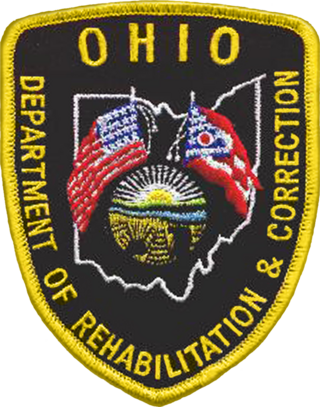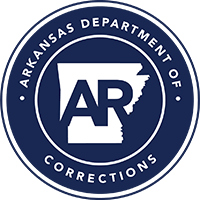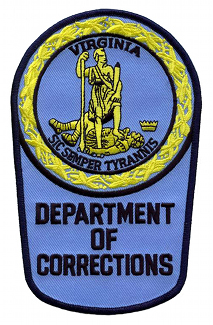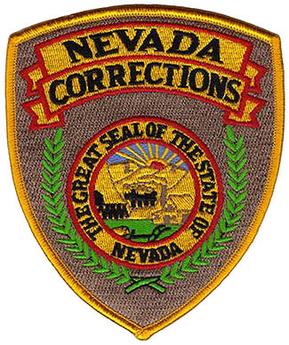
The Ohio Department of Rehabilitation and Correction is the administrative department of the Ohio state government responsible for oversight of Ohio State Correctional Facilities, along with its Incarcerated Individuals. Ohio's prison system is the sixth-largest in America, with 27 state prisons and three facilities for juveniles. In December 2018, the number of inmates in Ohio totaled 49,255, with the prison system spending nearly $1.8 billion that year. ODRC headquarters are located in Columbus.

The Mississippi Department of Corrections (MDOC) is a state agency of Mississippi that operates prisons. It has its headquarters in Jackson. As of 2020 Burl Cain is the commissioner.

The Arkansas Department of Corrections (DOC), formerly the Arkansas Department of Correction, is the state law enforcement agency that oversees inmates and operates state prisons within the U.S. state of Arkansas. DOC consists of two divisions, the Arkansas Division of Corrections (ADC) and the Arkansas Division of Community Corrections (DCC), as well as the Arkansas Correctional School District. ADC is responsible for housing and rehabilitating people convicted of crimes by the courts of Arkansas. ADC maintains 20 prison facilities for inmates in 12 counties. DCC is responsible for adult parole and probation and offender reentry.

The Maryland Department of Public Safety and Correctional Services (DPSCS) is a government agency of the State of Maryland that performs a number of functions, including the operation of state prisons. It has its headquarters in Towson, Maryland, an unincorporated community that is also the seat of Baltimore County, Maryland, United States, located north of Maryland's largest city of Baltimore. Additional offices for correctional institutions supervision are located on Reisterstown Road in northwest Baltimore.

The Georgia Department of Corrections (GDC) is an agency of the U.S. state of Georgia operating state prisons. The agency is headquartered in Forsyth, on the former campus of Tift College.

A prison farm is a large correctional facility where penal labor convicts are forced to work — legally or illegally — on a farm, usually for manual labor, largely in the open air, such as in agriculture, logging, quarrying, and mining. In the United States, such forced labor is made legal by the thirteenth amendment to the Constitution; however, some other parts of the world have made penal labor illegal. The concepts of prison farm and labor camp overlap, with the idea that the prisoners are forced to work. The historical equivalent on a very large scale was called a penal colony.

The Tennessee Department of Correction (TDOC) is a Cabinet-level agency within the Tennessee state government responsible for the oversight of more than 20,000 convicted offenders in Tennessee's fourteen prisons, three of which are privately managed by CoreCivic. The department is headed by the Tennessee Commissioner of Correction, who is currently Frank Strada. TDOC facilities' medical and mental health services are provided by Corizon. Juvenile offenders not sentenced as adults are supervised by the independent Tennessee Department of Children's Services, while inmates granted parole or sentenced to probation are overseen by the Department of Correction (TDOC)/Department of Parole. The agency is fully accredited by the American Correctional Association. The department has its headquarters on the sixth floor of the Rachel Jackson Building in Nashville.

The Virginia Department of Corrections (VADOC) is the government agency responsible for community corrections and operating prisons and correctional facilities in the Commonwealth of Virginia in the United States. The agency is fully accredited by the American Correctional Association and is one of the oldest functioning correctional agencies in the United States. Its headquarters is located in the state capital of Richmond.

The Oregon Department of Corrections is the agency of the U.S. state of Oregon charged with managing a system of 12 state prisons since its creation by the state legislature in 1987. In addition to having custody of offenders sentenced to prison for more than 12 months, the agency provides program evaluation, oversight and funding for the community corrections activities of county governments. It is also responsible for interstate compact administration, jail inspections, and central information and data services regarding felons throughout the state. It has its headquarters in Salem.

The Nevada Department of Corrections (NDOC) is a governmental agency in the U.S. state of Nevada. The NDOC headquarters is located on the property of the Stewart Indian School in Carson City.
The Roanoke River Correctional Institution is a minimum/medium security prison in North Carolina, United States. The oldest state prison in North Carolina, it has operated from 1892 to the present. It is located in Halifax County, on approximately 7,500 acres that was purchased by the state in 1899. It was previously named the Caledonia State Prison Farm and the Caledonia Correctional Institution.

The Florida Department of Corrections (FDC) is the government agency responsible for operating state prisons in the U.S. state of Florida. It has its headquarters in the state capital of Tallahassee.

The Department of Public Safety and Corrections (DPS&C) is a state law enforcement agency responsible for the incarceration of inmates and management of facilities at state prisons within the state of Louisiana. The agency is headquartered in Baton Rouge. The agency comprises two major areas: Public Safety Services and Corrections Services. The secretary, who is appointed by the governor of Louisiana, serves as the department's chief executive officer. The Corrections Services deputy secretary, undersecretary, and assistant secretaries for the Office of Adult Services and the Office of Youth Development report directly to the secretary. Headquarters administration consists of centralized divisions that support the management and operations of the adult and juvenile institutions, adult and juvenile probation and parole district offices, and all other services provided by the department.

The Pennsylvania Department of Corrections (PADOC) is the Pennsylvania state agency that is responsible for the confinement, care, and rehabilitation of approximately 37,000 inmates at state correctional facilities funded by the Commonwealth of Pennsylvania. The agency is headquartered in Hampden Township, Cumberland County in Greater Harrisburg, near Mechanicsburg.

The South Carolina Department of Corrections (SCDC) is the agency responsible for corrections in the U.S. state of South Carolina. It currently has about 4,500 employees and just over 15,000 inmates, in 21 institutions. The agency has its headquarters in Columbia.

The Connecticut Department of Correction (DOC) is the government agency responsible for corrections in the U.S. state of Connecticut. The agency operates 18 correctional facilities. It has its headquarters in Wethersfield.

Central Prison is a prison operated by the North Carolina Department of Public Safety in Raleigh, North Carolina. The prison, west of Downtown Raleigh, is on 29 acres (12 ha) of land and is bounded by a double wire fence with a razor ribbon on top. The Department of Public Safety website describes the original building as "castle-like."

North Carolina Correctional Institution for Women (NCCIW) is the primary North Carolina Department of Public Safety prison facility housing female inmates on a 30-acre (12 ha) campus in Raleigh, North Carolina, and serves as a support facility for the six other women's prisons throughout the state. The facility's inmate population, which is the largest in the state, consists of inmates from all custody levels and control statuses including death row, maximum security, close custody, medium security, minimum security, and safekeepers.
Lanesboro Correctional Institution is a state men's prison in Polkton, North Carolina, first opened in January, 2004 and operated by the North Carolina Department of Public Safety Adult Corrections. As one of the state's four largest prisons, the official capacity is 1,800 prisoners. The facility houses medium- and close-security inmates.
Brown Creek Correctional Institution is a state men's prison in Polkton, North Carolina, first opened in July 1993 and operated by the North Carolina Department of Correction.


















